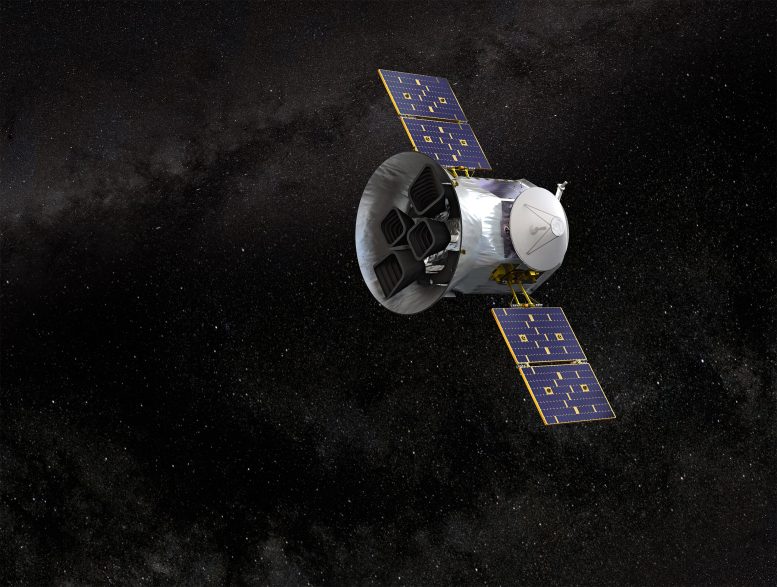Diagram of discovered exoplanet orbits. The orbits of exoplanets close to their parent stars tend to become circular over time, but three of the newly discovered exoplanets, except the bottom left, have maintained elliptical orbits despite being over a billion years old. Credit: Astrobiology Center
Researchers discovered four mini-Neptunes with volatile-rich compositions around red dwarfs, using both space and ground-based telescopes.
- Researchers discovered mini-Neptunes[1] around four red dwarfs[2], which are named TOI-782, TOI-1448, TOI-2120, and TOI-2406, using observations from a global network of ground-based telescopes with MuSCATs and the

Illustration of NASA’s Transiting Exoplanet Survey Satellite (TESS). Credit: NASA’s Goddard Space Flight Center
Detailed Observations and Findings
This study discovered four transiting[4] short-period mini-Neptunes (TOI-782 b, TOI-1448 b, TOI-2120 b, and TOI-2406 b) orbiting red dwarfs through follow-up observations with ground-based telescopes with MuSCATs (a series of Multicolor Simultaneous Camera for studying Atmospheres of Transiting exoplanets).[5]
These mini-Neptunes have radii about 2-3 times that of Earth and orbital periods of less than eight days. In addition, these radial velocity measurements[6] of their parent stars, obtained with the IRD (InfraRed Doppler) on the Subaru telescope, indicate that the upper limit on the masses of these four planets is less than 20 times the mass of Earth.
The relationship between the measured radii and the upper mass limits of these mini-Neptunes suggests that they are not rocky planets like Earth. Their interiors likely contain volatiles such as icy materials like H2O and atmospheres.
Orbital Dynamics and Future Research
The team also found that at least three (TOI-782 b, TOI-2120 b, TOI-2406 b) of these four mini-Neptunes are likely to be in eccentric orbits. In general, the orbit of a short-period planet around a red dwarf should be circular due to tidal dissipation. However, three short-period mini-Neptunes around red dwarfs have maintained non-zero eccentricities for billions of years.
One possible interpretation is that their interiors are not susceptible to tidal effects. The mass-radius relationship of these four mini-Neptunes suggests they are not rocky planets. Thus, the interiors of these mysterious mini-Neptunes may be similar to those of Neptune. Short-period mini-Neptunes are promising targets for atmospheric observations with the DOI: 10.3847/1538-3881/ad4115




















Discussion about this post